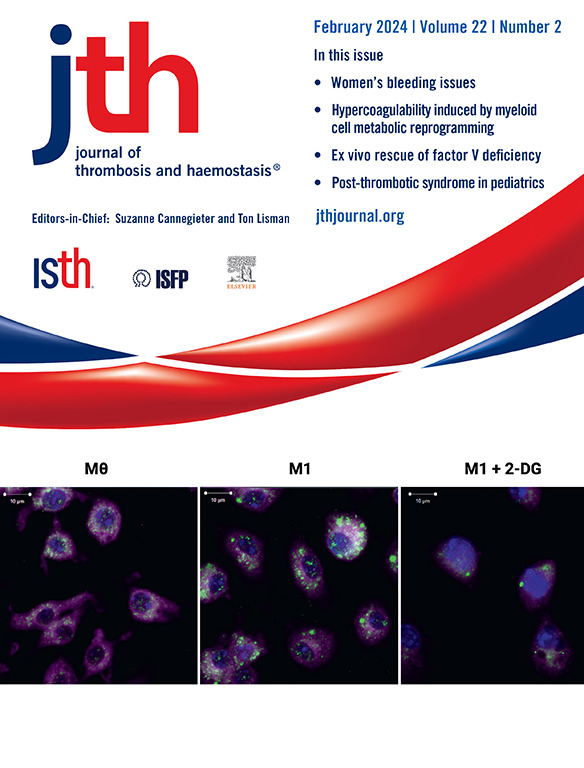Deconstructing the ISTH hemophilia guidelines for the clinician
IF 5
2区 医学
Q1 HEMATOLOGY
引用次数: 0
Abstract
Recently, the International Society on Thrombosis and Haemostasis (ISTH) Hemophilia Guidelines were published in this journal. The authors of these guidelines should be commended for a herculean task that took years to complete, and while this is no doubt a welcome addition to the literature, it does leave many questions for the clinician. This is primarily because 11 of the 13 recommendations are conditional, essentially meaning “that clinicians and patients need to consider individual preferences as well as the specific circumstances in which the decision is being made for implementation of the recommendation.” So, in essence, most of the recommendations allow the clinician to decide whether to use them or not. In our view, most clinicians are seeking more concrete recommendations when they search for a guidelines paper. Unfortunately, numerous conditional recommendations have been developed because hemophilia is a rare disease and the ISTH Guidelines rely upon the Grading of Recommendations, Assessment, Development, and Evaluation methodology. We endeavored to “deconstruct” the ISTH recommendations and offer clinicians a more concrete path forward based in part on the guidelines but supplemented with more recent literature and our own extensive experience and perspective managing hemophilia patients of all ages from 4 continents.
JTH在临床:解构ISTH血友病临床指南。
最近,ISTH血友病指南发表在该杂志上。这些指南的作者花了数年时间完成了一项艰巨的任务,应该受到赞扬,虽然这无疑是对文献的一个欢迎,但它确实给临床医生留下了许多问题。这主要是由于13项建议中有11项是有条件的,本质上意味着“临床医生和患者需要考虑个人偏好以及决定实施建议的具体情况。”所以,从本质上讲,大多数建议都是由临床医生决定是否使用它们。在我们看来,大多数临床医生在寻找指导文件时都在寻求更具体的建议。不幸的是,血友病是一种罕见的疾病,而ISTH指南依赖于GRADE方法导致了许多有条件的建议。我们试图“解构”ISTH建议,并在部分基于指南的基础上,为临床医生提供更具体的前进道路,但补充了更多的近期文献和我们自己管理来自四大洲的所有年龄段血友病患者的丰富经验和观点。
本文章由计算机程序翻译,如有差异,请以英文原文为准。
求助全文
约1分钟内获得全文
求助全文
来源期刊
CiteScore
24.30
自引率
3.80%
发文量
321
审稿时长
1 months
期刊介绍:
The Journal of Thrombosis and Haemostasis (JTH) serves as the official journal of the International Society on Thrombosis and Haemostasis. It is dedicated to advancing science related to thrombosis, bleeding disorders, and vascular biology through the dissemination and exchange of information and ideas within the global research community.
Types of Publications:
The journal publishes a variety of content, including:
Original research reports
State-of-the-art reviews
Brief reports
Case reports
Invited commentaries on publications in the Journal
Forum articles
Correspondence
Announcements
Scope of Contributions:
Editors invite contributions from both fundamental and clinical domains. These include:
Basic manuscripts on blood coagulation and fibrinolysis
Studies on proteins and reactions related to thrombosis and haemostasis
Research on blood platelets and their interactions with other biological systems, such as the vessel wall, blood cells, and invading organisms
Clinical manuscripts covering various topics including venous thrombosis, arterial disease, hemophilia, bleeding disorders, and platelet diseases
Clinical manuscripts may encompass etiology, diagnostics, prognosis, prevention, and treatment strategies.

 求助内容:
求助内容: 应助结果提醒方式:
应助结果提醒方式:


